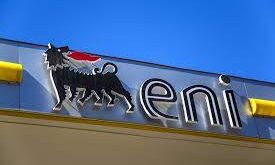Reuters are reporting that China’s state-owned CNOOC is spending US$10 million to lease two tankers to store an emergency stash of LNG amid growing concerns that China is facing a winter fuel crisis.
LNG tankers are not only among the most expensive merchant vessels to hire. but keeping the fuel super-chilled is energy intensive and costly. much more expensive than putting crude on an oil tanker for later sale.
Also. market conditions mean the value of the LNG stores are likely to have fallen from their purchase price by the time CNOOC starts selling off the supplies.
The move highlights the unusual methods being employed by the state major to plug shortages as China’s campaign to convert millions of homes to gas heating from coal and force factories to use gas boilers for the first time boosts demand.
Last year CNOOC hired one tanker for a similar purpose.
CNOOC leased Cool Explorer and Neo Energy under a short-term arrangement roughly costing US$10 million. or US$40 000 a day. during China’s heating season between mid-November and mid-March.
China’s surge in natural gas demand has exposed inadequate infrastructure and insufficient domestic output much earlier than most experts expected. with domestic LNG prices soaring over the past month to record highs this week.
Just two weeks into the start of the heating season. two major consuming provinces warned last week of shortages and cut supplies to some users.
Beijing Gas. a local government-controlled distributor in the Chinese capital. had a similar operation last winter to cover demand spikes in case of a cold snap.
For any product. storage makes economic sense only if future prices are higher than those for immediate delivery. a market condition called contango.
The Asian spot LNG curve. however. is in backwardation. meaning future prices are lower than prompt market levels.
Asian spot LNG prices for January delivery are at almost US$10 per mmBtu. By April. they are expected to be barely above US$7 per mmBtu.
The CNOOC-leased vessels store gas at -160°C. and each has a capacity of about 150 000 m3.
CNOOC will typically park the tankers between its receiving terminals in Tianjin in the north and Ningbo on the east coast. and will move the ships around and pick up new supplies once they are emptied.
CNOOC operates a FSRU. Cape Ann. as the anchor supplier to Tianjin. where imported LNG is offloaded and transferred to trailers that then delivered the fuel to industrial and residential users.
The floating storage is partly needed because CNOOC’s regasification capacity is small at Tianjin compared to that of domestic rival PetroChina’s nearby Caofeidian LNG terminal.

 Iran Energy News Oil, Gas, Petrochemical and Energy Field Specialized Channel
Iran Energy News Oil, Gas, Petrochemical and Energy Field Specialized Channel



